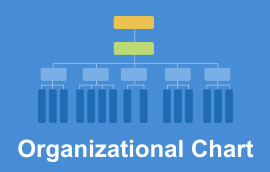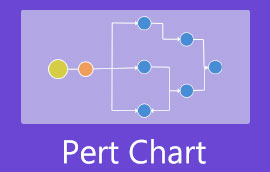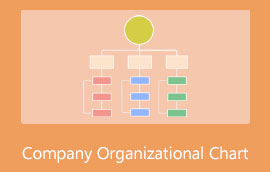A Visual Guide to Problem-Solving: How to Do A Tape Diagram Using 4 Methods
Tape diagrams, also called bar models or strip diagrams, are awesome visual aids that can make it easier for you to get and solve math problems. They show numbers as rectangles or bars, giving you a clear picture of how things are related and making it simpler to figure things out. In this guide, we will look at different ways how to do a tape diagram, so you can get the hang of this super useful trick for solving problems. Whether you're a student, teacher, or just a parent helping out, getting the hang of tape diagrams can boost your math skills and confidence. Let's jump into the tape diagrams and see how they can make solving math problems a piece of cake.

- Part 1. What is a Tape Diagram
- Part 2. How to use a Tape Diagram
- Part 3. How to Do a Tape Diagram with MindOnMap
- Part 4. How to Do a Tape Diagram with 3 Other Tools
- Part 5. FAQs on How to Do A Tape Diagram
Part 1. What is a Tape Diagram
A tape diagram is a handy tool in math for illustrating problems with numbers, ratios, and how different amounts are related to each other. It's made up of bars or tapes drawn to look like real-life sizes, with each bar showing a certain value or amount.
Key Points About Tape Diagrams
• It makes it easy to see how numbers and quantities are related, helping you better understand and solve math problems.
• They're great for showing the parts representing a different amount.
• It is really good for comparing the amount of one thing compared to another, especially when dealing with ratios and proportions.
• Breaking down tricky problems into smaller, easier-to-see parts makes solving math problems feel less daunting.
Part 2. How to use a Tape Diagram
This guide will show you how to draw a tape diagram to tackle math problems. By getting the hang of making and looking at tape diagrams, you can better solve problems and better grasp math ideas.
Figure out what numbers matter in the situation. Decide which number is the total and which is the pieces.
Draw a shape like a rectangle or bar to show the total amount. Then, split the shape into pieces according to the given information.
Write down what each piece is worth or how much it is. Check out the picture to see how the numbers relate.
Use the diagram to make up equations or do the math.
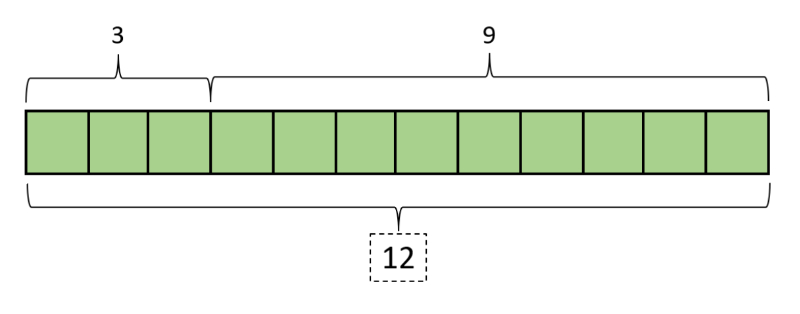
Part 3. How to Do a Tape Diagram with MindOnMap
MindOnMap is the best online tool that makes it easy to sort out your thoughts, ideas, and projects visually. Whether you're just throwing out ideas, planning your next move, or trying to figure something out, it's great for making mind maps, flowcharts, and all sorts of diagrams. People from all walks of life, like students, teachers, workers, and teams, love it because it's a simple yet effective way to make complicated stuff easier to understand by breaking it down into clear, easy-to-see diagrams. What sets MindOnMap apart is its easy use, even if you need to improve at making mind maps and diagrams. It has features like working on things together in real-time, picking from different templates, and working on it from anywhere with your device. MindOnMap is perfect for getting things done faster, better-grasping things, and sharing your thoughts with others. Whether you're using it for personal stuff, school projects, or working with a team, MindOnMap makes it a breeze to see and organise all
Secure Download
Secure Download
Steps on how to use tape diagrams in MindOnMap
Search MindOnMap in the search engine. You can download or use it free online. Arrange your data. Make sure you're clear on what numbers or values you're dealing with, and choose the Flowchart.
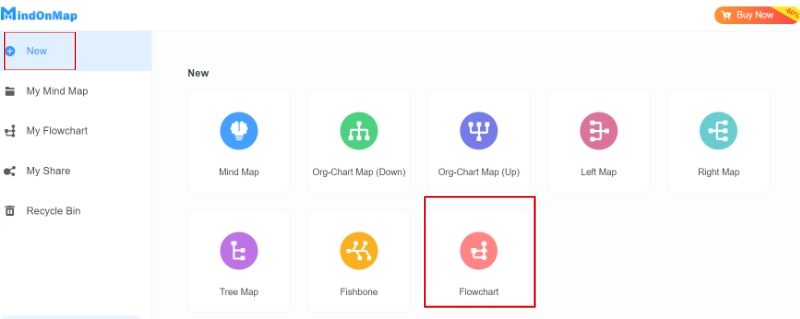
Choose a big rectangle or line to show the total amount. Break it down into smaller sections to show the different parts. You can change the colours and themes. After that, you can use brackets to separate it.
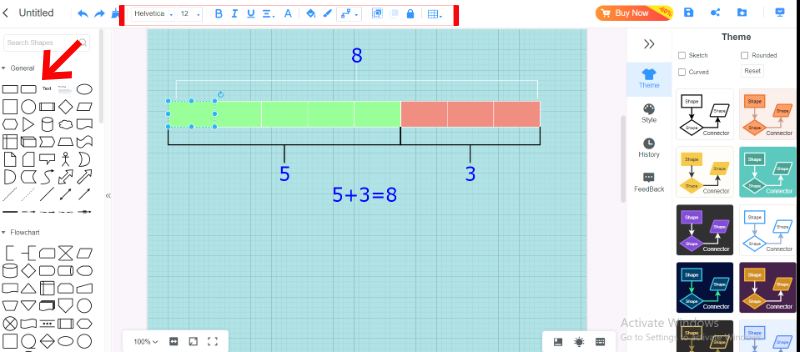
Label your data and create a formula to sum it up.
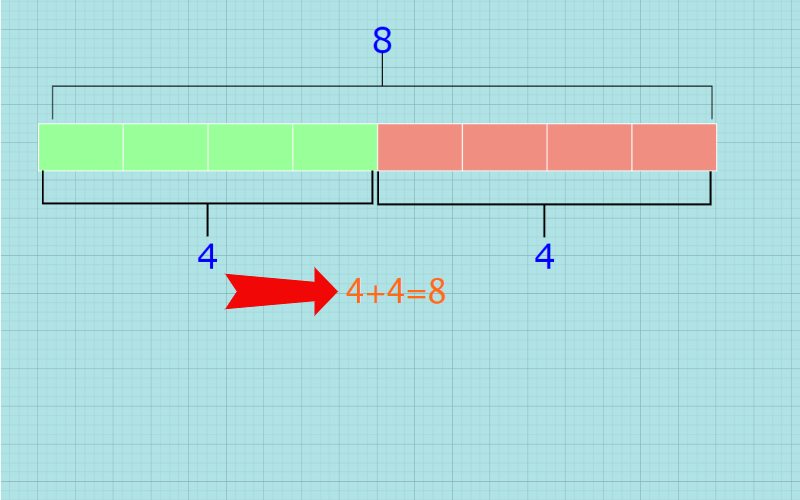
Once you've looked over all the info and possible fixes, click the Save button to save your project.
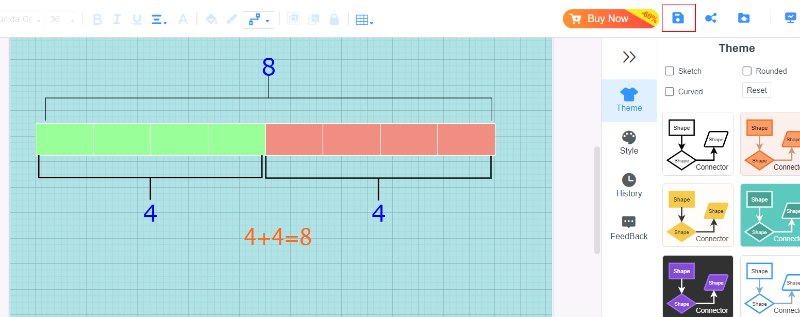
Part 4. How to Do a Tape Diagram with 3 Other Tools
How do you make a tape diagram? Tape diagrams are super helpful visual aids that make it easier to get and solve math problems. They show numbers as rectangles or bars, clearly showing how things are connected and simplifying the problem-solving process. This guide will look at three go-to tools for making tape diagrams: EdrawMax Online, Creately, and Lucidchart. Each tool has features, so you can pick the one that fits what you need and like the most. By making tape diagrams, you'll get better at solving problems and understanding math concepts more deeply. Let's jump into the tape diagram and see why these tools are awesome.
Option 1. EdrawMax Online
EdrawMax Online is a handy tool for making all sorts of diagrams. It comes with many different templates, shapes, and ways to tweak them. Even though it's not made just for tape diagrams, its ability to do many things makes it a good fit for making these kinds of visual guides.
Search the tool and begin by making a new document.
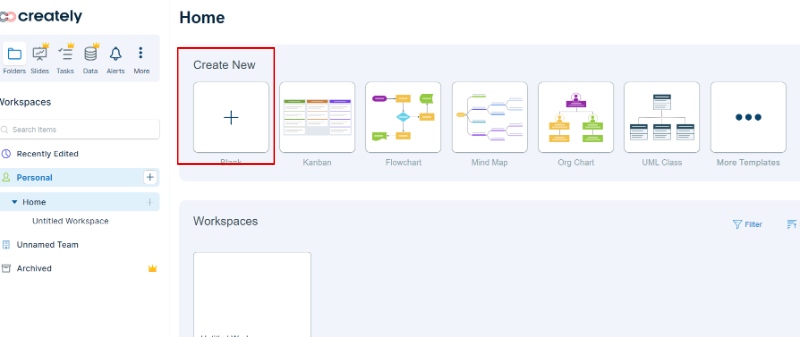
Choose rectangles or lines from the shape library to show the tape and its sections. Use the tools to make the rectangles the right lengths for your data. Use text boxes to mark the different sections of the tape diagram.
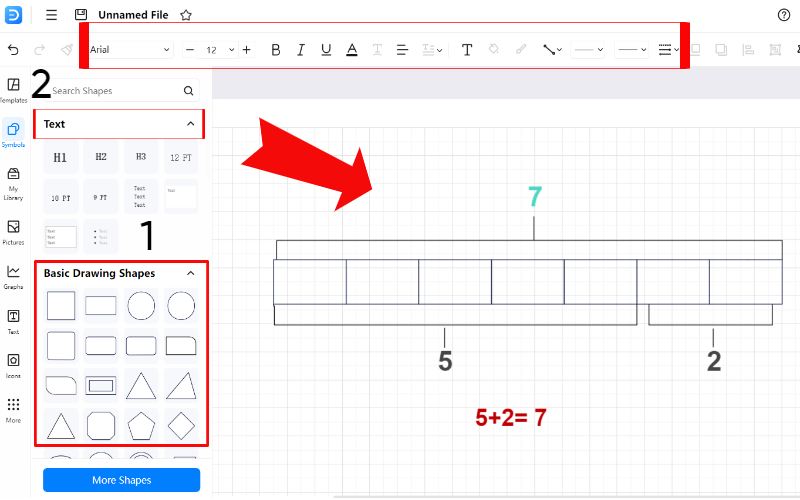
Change the colours, fonts, and other elements to make your tape diagram your own.
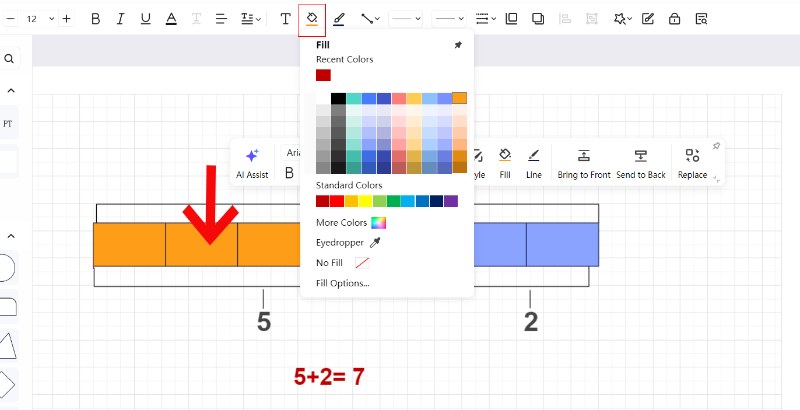
Save your work if you are satisfied with your tape diagram.
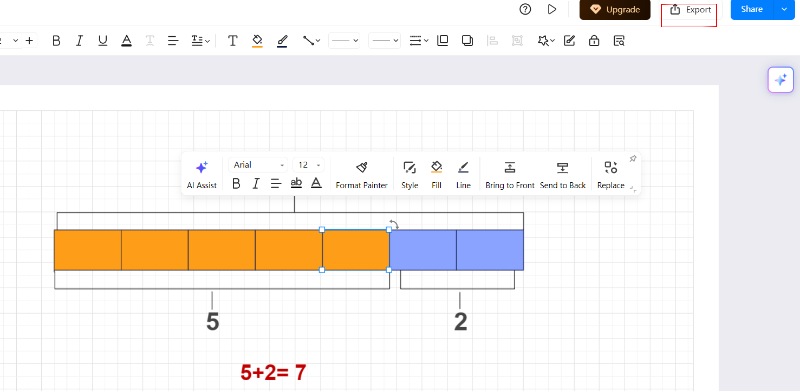
Option 2. Creately
Creately is a strong drawing tool with many templates, shapes, and customisation options. Although it's not made just for tape diagrams, its flexibility makes it a good fit for creating these visual maps.
Steps on how to do a tape diagram with Creately
Go to the Creately website and create a diagram using a basic rectangular shape and connector to represent the tape and its divisions.
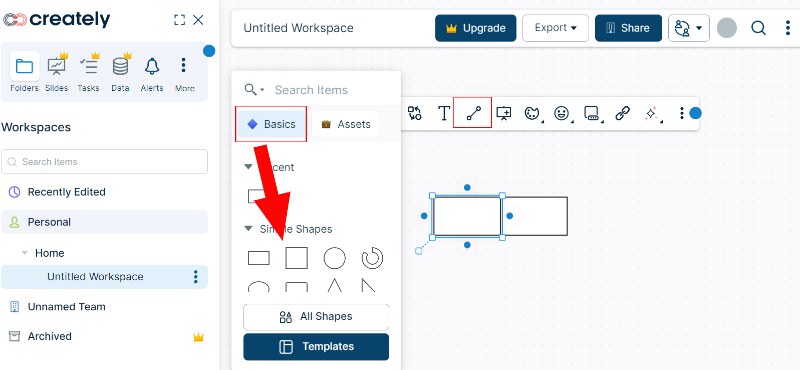
Use the resizing tools to adjust the lengths of the rectangles to match your data. Label the different parts of the tape diagram using text boxes.
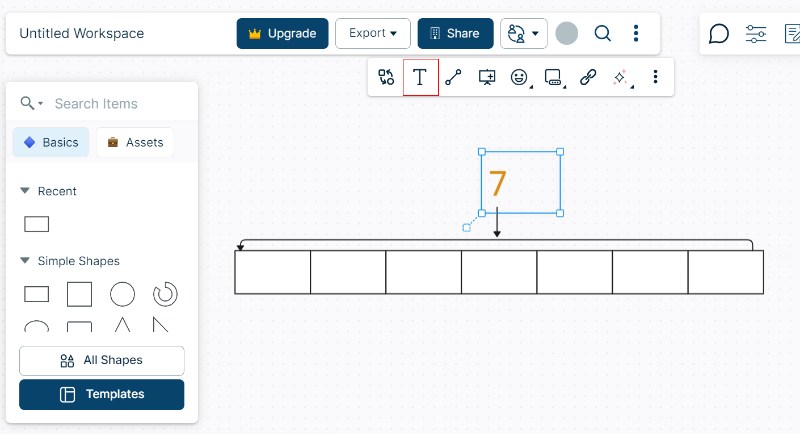
Change colours, fonts, and other visual elements to personalise your tape diagram.
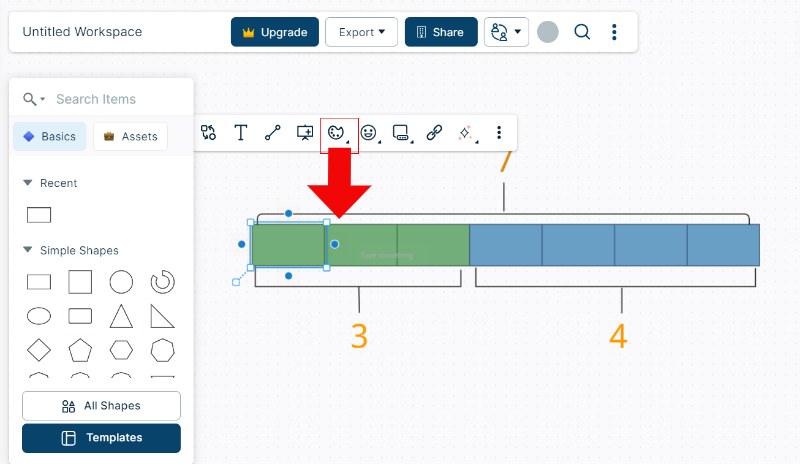
You can now save your tape diagram in Creately. Just click Export.

Option 3. Lucidchart
Lucidchart is a well-liked drawing tool that's easy to use and has many cool features. It has many different templates and shapes to make all sorts of diagrams, like tape. Here’s how to draw a tape diagram.
Go to Lucidchart and log in to your Google account. Click New and select the Blank document.
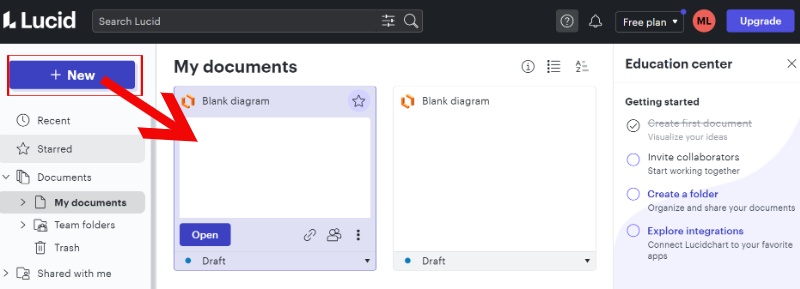
Select rectangles or lines from the shape in the Flowchart and Shapes to represent the tape and its divisions.
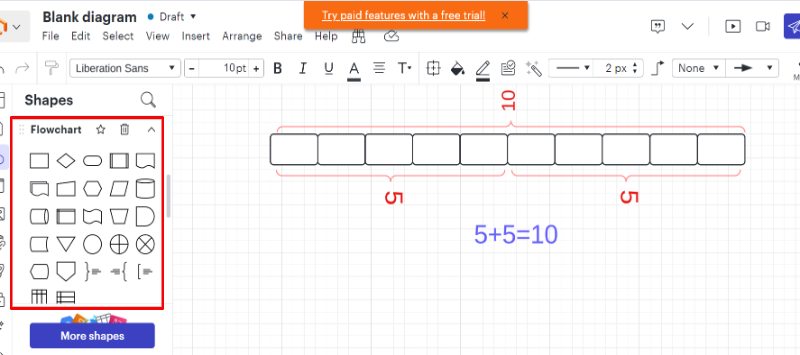
Use the resizing tools to adjust the lengths of the rectangles to match your data. You can also insert text boxes to label the different parts of the tape diagram.
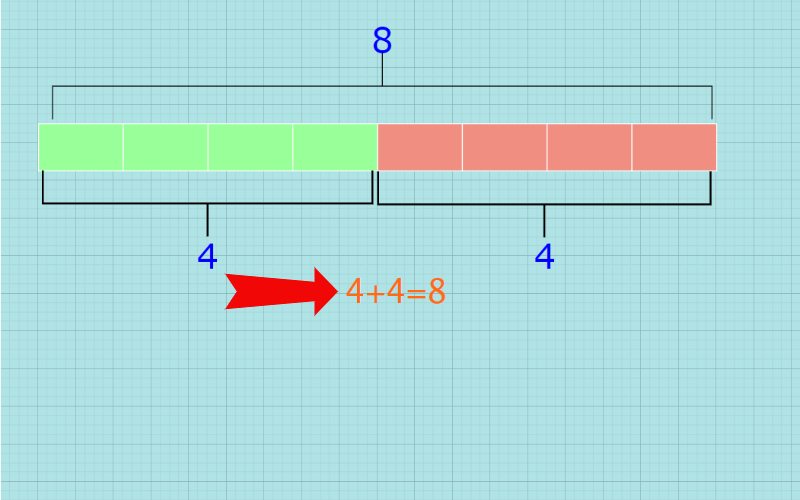
You can fill in a colour to divide your data. After you finalise your work, Save or Export your diagram. You can find it in the File ribbon.
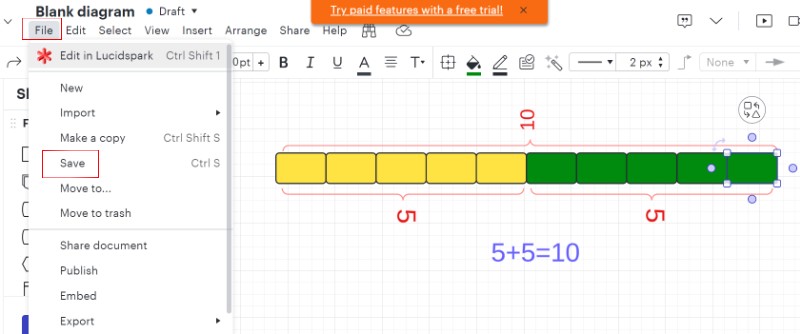
Part 5. FAQs on How to Do A Tape Diagram
How do you solve ratios using tape diagrams?
To figure out ratios with tape diagrams, sketch out bars for each ratio number, split them into equal pieces according to the ratio, and mark them off. Your numbers work out the missing one by keeping the same ratio, and make sure the ratio matches the problem you started with. Tape diagrams make it easy to see and solve problems with ratios.
How do you describe a tape diagram?
A tape diagram is handy for showing how numbers and their relationships work in math. It's a rectangle or bar cut into sections to show how numbers are linked. Also called a bar model, strip diagram, fraction strip, or length model, it's great for tackling all sorts of math problems, especially those involving words. Imagine it like a picture of a number line, but instead of showing whole numbers, it helps you split up amounts or compare different numbers.
What is a diagram in math for 3rd grade?
In math, a diagram is like a picture that shows information or data in a way that's easy to understand. It's a visual tool that makes learning math concepts a lot easier. For kids in 3rd grade, you can use diagrams in many ways, such as Number lines: These are diagrams that line up numbers in order. Bar graphs: These are diagrams that use bars to show data. Pictures: You can draw pictures to help you solve math problems.Models: You can use stuff or drawings to show math ideas. Diagrams allow you to see math problems more clearly and make them simpler.
Conclusion
In short, this is all about how to draw a tape diagram. No matter where you use them, tape diagrams are a handy and good way to see and figure out math problems, so they're super useful for students, teachers, and anyone trying to make complicated stuff easier to understand.








